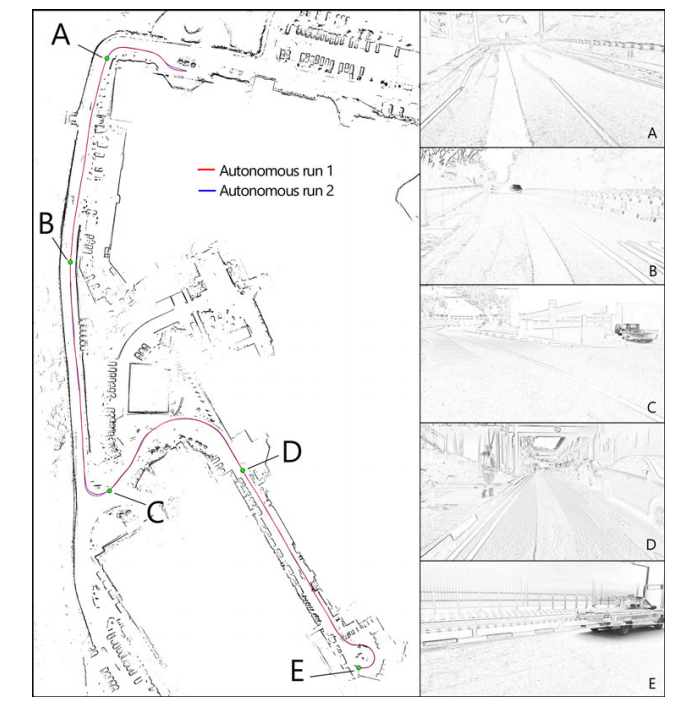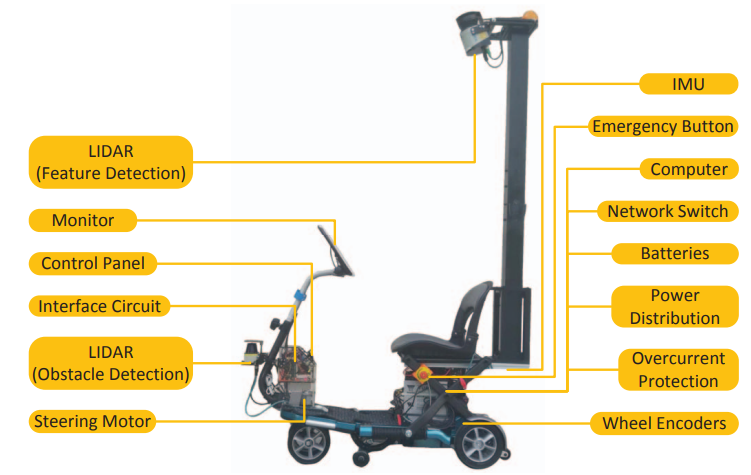Summary Chiel van der Laan

The problem of mapping can be solved by constructing a 2D scan with a LIDAR system from a 3D environment. [1] After which it the localization can be done in the 2D mapped environment for lower processing power.[2] An example of the visual validation of localization can be seen in figure 1. The LIDAR system for the mapping and localization has to be able to scan a large area at once and has to be high on top of the mobility scooter because of this.
The more complex dynamic environment that has to be avoid pedestrians and other (smaller) moving vehicles can be done by a second LIDAR system lower to the ground. An example of the components of the mobility scooter can be seen in figure 2. In this example two external lead-acid batteries rated at 12 V and 22 Ah each are connected in series, to form an auxiliary 24 V power supply. (In the example used the mobility scooter is shared between multiple users, which is something we could explore too, as this may reduce the cost of being able to ride in an autonomous mobility scooter.)
